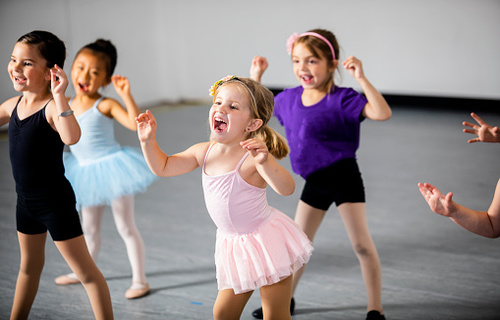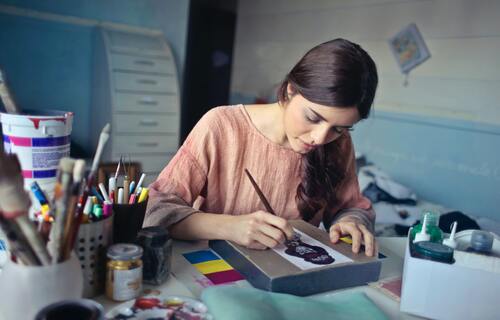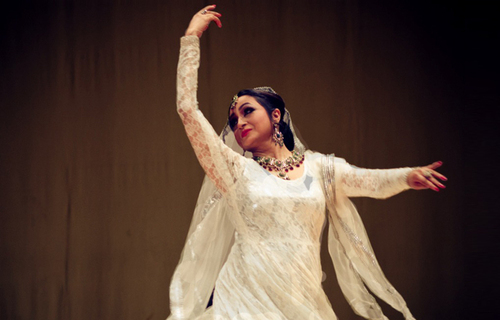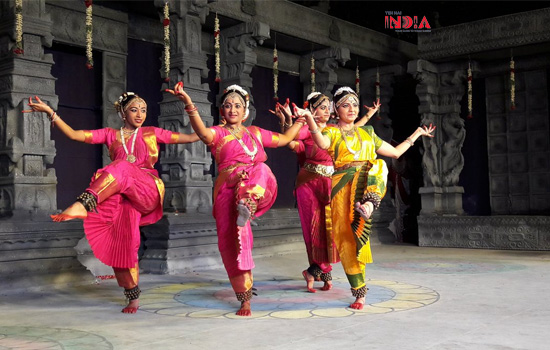Bhartnatyam, Kathak, Mohiniyattam, Oddisi dance classes by experts
Natyasutra
/5
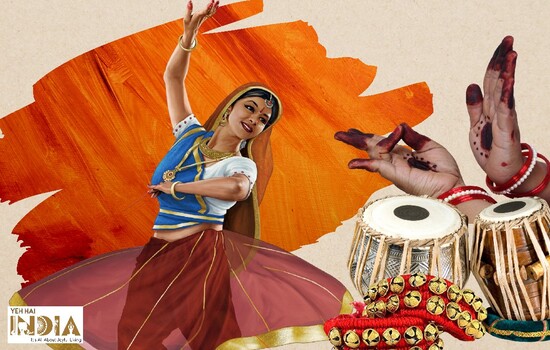
Natyasutra
/5

Services Offers
- Personalized lectures
- Classes
- Tutorials
- Performances
A lasting preservation of India’s rich artistic and cultural history is sought for by NatyaSutra. Our vision is to offer tailored lectures, tutorials, workshops, and performances of all Indian art and culture online, available around-the-clock.
Courses and Offerings:
- Ananda Bhairavi Swarajathi:
Mohiniyattam, Master Class, Dr Neena Prasad
The teachings of Dr. Neena Prasad begin with an overview of the Swarajathi and an explanation of its numerous parts. The Guru then explains the technical aspects of the performance as well as teaching the students the Ananda Bhairavi Swarajathi and specific parts of each segment. By offering a comprehensive version of the piece and student demonstrations for greater understanding, this programme makes learning easier for students.
The Swaram opens the piece, which is then followed by the predetermined lyrics and music. The Nayika rapidly switches to the pure dance sequence as soon as she steps onto the stage. This is followed by narrative explanations for the audience and the Sahityam.
There are 54 videos and a thirty-one minute audio download out of the full curriculum. This will assist the teacher in deconstructing the composition’s crucial elements in order to broaden the scope of the learning process.
2. Om Jayanti Mangala Kali:
Kathak, Master Class, Guru Dr Pali Chandra
A unique prayer called Om Jayanti Mangala Kali is said in honour of Goddess Durga, who is regarded as the God of War. The Goddess, a composite created by a number of holy entities, is presented by Guru Pali Chandra as having strengthening power. She has remained a symbol of feminine power, rage, and mystique because her goal has always been to put an end to evil. The Guru offers her interpretation of this well-loved recital of the prayer, which is a tale of her creativity and tenacity.
There are seven sections that make up the overall programme. Each component is introduced separately, starting with a thorough explanation of the composition’s historical significance. Following these, the Guru performs demonstrations, which are followed by solo and group performances by the students. You can download roughly 47 videos with music in Mp3 format for use in practice and performance.
3. Bhogeendra Sayinam:
Bharatanatyam, Composition, Dr Rajashree Warrier
This piece of Bharatanatyam is a tribute to the great Padmanabha Swamy, the defender and preserver of the Land. The majesty and splendour of the celestial deity, whose presence relieves his devotee, are brought forth by Dr. Rajashree Warrier. Lord Vishnu is honoured by Bhogeendra Sayinam, which features him perched atop the serpent Anantha or Adi Sesha. Here, the primary deity of Thiruvananthapuram’s famous Sree Padmanabhaswamy Temple is highlighted. 18 Videos, 01 hour 54 minutes
1 Music / Audio download, 05 min 05 sec
4. Thiruvempavai:
Bharatanatyam, Composition, Rama Vaidyanathan
Rama Vaidyanathan’s Thiruvempavai is a Bharatanatyam composition that is based on the writings of the Shaivite saint Manikkavacakar from the middle ages. It exhorts the listener to reject ignorance and widen their minds to better and various viewpoints in both literal and figurative ways. In the presence of Lord Shiva, all darkness is avoided, leaving only brightness. Lord Shiva is the purifying light. This is a brilliant illustration of how Indian classical dance interprets the knowledge of our great saints.
There are 25 videos in total, which make up the complete curriculum. The teacher starts off each introduction with a thorough explanation before moving on to the specific parts. The original verse’s every word is discussed in detail. In the opening, the Guru sets the general tone for the composition before meticulously adding the specifics of each addition. The Guru then gives demonstrations, and at the end the entire arrangement is performed. For individual practice sessions, the audio file for this work is available.
5. Thumri – Dagar Chalat:
Kathak, Composition, Guru Dr Pali Chandra
There are twelve clips and one MP3 music file in this course. The Guru introduces each stanza separately and explains why it is important. These are followed by demonstrations from the Guru, and they are completed with a performance of the entire composition and a special video with advice for pupils.
The Guru starts by explaining the subtleties of captivating the crowd with the Thumri. The individual parts that make up the Thumri are detailed in detail as the Shabdarth, Vyakhyarth, Sthayi bhav, and Sanchari bhav. The Thumri often entails constantly repeating a single line, with the performer bearing sole responsibility for maintaining the audience’s attention. A story or an example taken from a sacred scripture is conveyed over the course of several stanzas, and the tales show a wide variety of human emotions. In order to effectively express the lesson’s overall content and tone, each of these is thoroughly discussed in this session. There are also slower, line-by-line demonstrations available in class.
6. Lament to the Birds:
Bharatanatyam, Composition, Rama Vaidyanathan
As the Nayika, or heroine, who has fallen in love with Narayana, confesses her sentiments to the birds nearby, Rama Vaidyanathan captures the sorrow of the character. This Bharatanatyam piece is a beautiful and moving illustration of human limitations and how love in its various manifestations effect our protagonist’s psyche. She interprets her own feelings toward Lord Vishnu and his avatars in part through the cooing of the rooster, the red beak of the parakeet, and the magnificent flight of the eagle. The song’s main themes are her grief, her happiness over his memories, and the intensity of her feelings for the god she reveres.
The hymn “Lament to the Birds” is one of the three pasurams (hymns) that were taken from the fabled Naalayira Divya Prabhandham, a sacred collection of 4000 words dedicated to Lord Vishnu and his many beautiful forms. The programme is broken down into 8 videos, each of which is further separated into 3 distinct pieces. Each component of the piece is first described, followed by a demonstration, and ultimately performed.
7. Cholkettu:
Mohiniyattam, Composition, Smitha Rajan
Students will learn about the intricate Cholkettu, or the invocation procedures, in this Mohiniyattam presentation. The entire sequence’s philosophy, procedures, and theology are explained to viewers by renowned craftsman Guru Smitha Rajan. The lead-off is called the Cholkettu, and it is a revered ode to the supernatural entities who ceaselessly direct and guard the performer. The entire Mohiniyattam exhibit is framed by it.
Twenty videos make up the five sections that make up the complete programme. Each aspect is presented separately along with important reminders. A general introduction is followed by examples from the Guru’s disciples in the composition. The main design is divided into two sections, one of which honours a different deity. It starts with a Slokam or Sahithya (verse), then moves through a series of Adavu verses before ending with another Slokam.
8. Yennadaina:
Bharatanatyam, Composition, Rama Vaidyanathan
This Rama Vaidyanathan Bharatanatyam composition tells the story of a bold woman who falls in love with Lord Krishna. Rama Vaidyanathan immediately conveys the woman’s anxiety at not being the exclusive recipient of her lover’s attention. Despite having a broken heart at every turn, our Nayika is adamant that she should be the sole person by his side. She soon draws a line in the sand, and each stanza is her mocking response to each of his actions. It is the most sincere expression of love, considered selfish by some, yet includes the simple desire to have the one who controls your heart all to yourself.
This Rama Vaidyanathan performance is based on the renowned Shri Balamurali Krishna’s Telugu composition. The programme is broken down into 10 videos, each of which is further separated into 4 distinct pieces. Each component of the piece is first described, followed by a demonstration, and ultimately performed.
9. Pushpanjali and Alarippu:
Bharatanatyam, Composition, Rama Vaidyanathan
Rama Vaidyanathan leads us through Pushpanjali and Alarippu, two very significant components of a Bharatanatyam composition. Pushpanjali is a floral sacrifice made to the gods, one’s teachers, and others present during the recital as a sign of respect. It is a display of prayer and faith, following which the dancer will start their performance. Alarippu, which makes use of every aspect of the artist’s body, is an allusion to the flowering bud. It serves as a practise for more challenging poses and serves as a moving sign of the disciple’s genuine capability.
Over the course of 15 videos, the complete curriculum has been separated into 6 portions. Along with the philosophical meaning of each performance, Pushpanjali and Alarippu are introduced. Each component of the piece is first described, followed by a demonstration, and ultimately performed.
10. Ardhanareeswara Ashtakam:
Bharatanatyam, Composition, Rama Vaidyanathan
In this Bharatanatyam piece, Rama Vaidyanathan celebrates the duality of existence. The heart of creation itself can be found in the union of Lord Shiva and Goddess Parvati, which is represented by the Ardhanareeswara. As the unique qualities of the two celestial entities merge to give us sentience, the Ardhanareeswara represents the ideal balance between masculine and feminine energy. Shiva and Parvati come together to demonstrate to us how interdependent the sexes are, without which life’s magic would not be conceivable.
Based on verses from the illustrious Adi Sankaracharya, Rama Vaidyanathan wrote this piece. Over the course of 9 films, it has been separated into 3 sections. Each component of the piece is first described, followed by a demonstration, and ultimately performed.
11. Intermediate Lessons:
Kathak, Intermediate, Guru Dr Pali Chandra
Guru Pali Chandra is offering you a course in intermediate Kathak online. The beginner’s course, which is also offered on this website, builds on the lessons that were taught during the course. At this point, the disciples are introduced to the subtleties of Kathak with a more recent and sophisticated viewpoint on the art form. The learner is carefully introduced by the Guru to the subsequent stage of their Kathak journey.
Thirty-one classes make up the full programme. Each class is introduced separately, starting with in-depth explanations of its historical significance. Following these are solo and group performances by the Guru and her students, respectively. For self-practice and performance, there are roughly 200 videos with music mp3s available for download.
12. Navarasa Kauthwam:
Bharatanatyam, Master Class, Dr Rajashree Warrier
Dr. Rajashree Warrier created the innovative concept and Bharatanatyam choreography for Navarasa Kauthwam. The maestro derived the “Navarasa,” or nine emotions or flavours, from stories in the Mahabharata. They are evoked by this composition. The foundation of this piece is a “Kauthwam,” which is an imploration to a celestial deity. The Guru represents a vibrant and novel new perspective on how a person experiences a dizzying array of feelings by drawing on the emotional context of the past. Every facet of a person’s existence is represented by these nine different tastes.
Thirty videos, separated into nine sections, make up the whole programme. The introduction of each component is done separately, starting with thorough justifications from the Guru. Each rasa is carefully displayed together with its significance and underlying meaning. The Guru introduces the composition with a general tone, and then gradually adds the specifics of each rasa. The Guru then gives demonstrations, and at the end the entire arrangement is performed. Additionally included are the piece’s music and lyrics, which can be downloaded and utilised for private practice sessions.
13. Odissi Beginners Lessons:
Odissi, Beginners, Vidushi Sujata Mohapatra:
Sujata Mohapatra is teaching a basic online Odissi training in this instance. At this point, the vibrant world of Odissi is presented to students from a novel and refreshing angle. The illustrious Padma Vibhushan Guru Kelucharan Mohapatra’s teachings are emphasised in the course material. It attempts to direct the student as they embark on their journey to learn about Odissi.
There are thirteen separate portions in the overall programme. Each lesson is a methodical step toward mastering the fundamentals of odissi. The 68 videos that make up the entire course have English as the instruction’s primary language. Following a verbal explanation, positions can be seen being performed by students and the Guru.
14. Varnam Suma Sayaka:
Mohiniyattam, Master Class, Smitha Rajan
There are 69 videos and 1 audio file out of the complete programme. This will assist the teacher in deconstructing the composition’s crucial elements in order to broaden the scope of the learning process. The dancer approaches Lord Krishna and tells him about her friend’s plight to start the Varnam. She tells herself in the charanam, or conclusion, that Lord Krishna has not listened to her or paid attention to her friend’s deteriorating condition, staying unsympathetic to her unfortunate situation.
As part of her lessons, Guru starts by walking her students through the concept of Varnam and all of its parts. The Guru then instructs the trainees by going through the main idea of the Suma Sayaka Varnam, specifics of each segment, and technical details of the performance. With a comprehensive performance of the work, this session makes learning easier for students.
Out of all the courses available on the Natya Sutra website, these are some of them. In addition to offering dance lessons taught by a variety of talented artists and Gurus, Natya Sutra also supports other types of art from the dominant Indian culture.
Image Gallery
-
₹1000 ₹28,000
The price of various courses range from INR 1000 to INR 28,000.
How To Buy
You can avail NatyaSutra’s courses through their website
More from the Brand
Some of India’s most accomplished practitioners of its ancient art forms are represented by the Gurus on this platform. They are examples of long-standing systems of thinking. Their compositions and lectures draw on both the past and the future. They are true trend-setters, and hope that their students will be able to create their own pathways based on what they learn from these Gurus. NatyaSutraOnline is honoured to have Kathak virtuoso Guru Pali Chandra serve as the project’s Chief Mentor and Chairperson of the Board of Advisors. Their mission has advanced thanks to her perception and vision in the field of Indian classical dance.
NatyaSutra states, India is a cosmopolitan nation that is always changing, and it owes its rich traditions to the many millions who came before it. It can be challenging to identify the cultural influences that have subtly moulded our entire being at times. Our musical and dancing styles are the forerunners of similar. They contain the stories, suggestions, cautions, and worldview that have sustained our society for ages. For the benefit of society as a whole, it is our responsibility to preserve and spread these teachings to our diaspora and the world.
FAQs
Q. How can I access the classes?
A. You can book the classes through their website.
Q. How do I choose the best course for me?
A.Each lesson is structured around a different dance form and includes a number of dances that make up that form. Additionally, there are beginner and intermediate levels for the courses. Choose what suits you the best and sign up for it.
Q. What forms of payment are accepted?
A. They support all payment modes be it UPI, Wallet, Net Banking, Debit card or Credit cards.
Q.Do I need to sign up in advance for classes?
A. Yes, it is recommended that you sign up for classes in advance.
Social Media
About
The rich artistic and cultural history of India is being attempted to be permanently preserved through NatyaSutraOnline. Their vision is to offer tailored lectures, tutorials, workshops, and performances of all Indian art and culture online, available around-the-clock. They are honoured that NatyaSutra’s prestigious panel of Maestros has consented to donate
their time and priceless knowledge to the initiative.
Read More Geographical restrictions won’t ever again prevent someone from beginning or continuing their training in Indian classical dance. All digital platforms will have access to these classes, which will be updated often. While gaining an in-depth understanding of the thoughts of a professional classical dancer, students will have the opportunity to engage with and post questions to the Masters themselves.
Get In Touch
Fill in your details, the brand would get back to you.
Related Services
Recent Posts
- What Buyers Notice About Your Property Before They Reach the Door
- How to Achieve All-Day Hydration with Vitamin E Range
- Unlocking Youthful Radiance: Simple Tips to Help You Look and Feel Younger
- The Dynamic Duo: Exploring the Health Benefits of Magnesium and Zinc
- 7 Fashionable Workwear Outfit Ideas to Glam Up Your Everyday
© 2025 Site maintained by Blue Cloud




